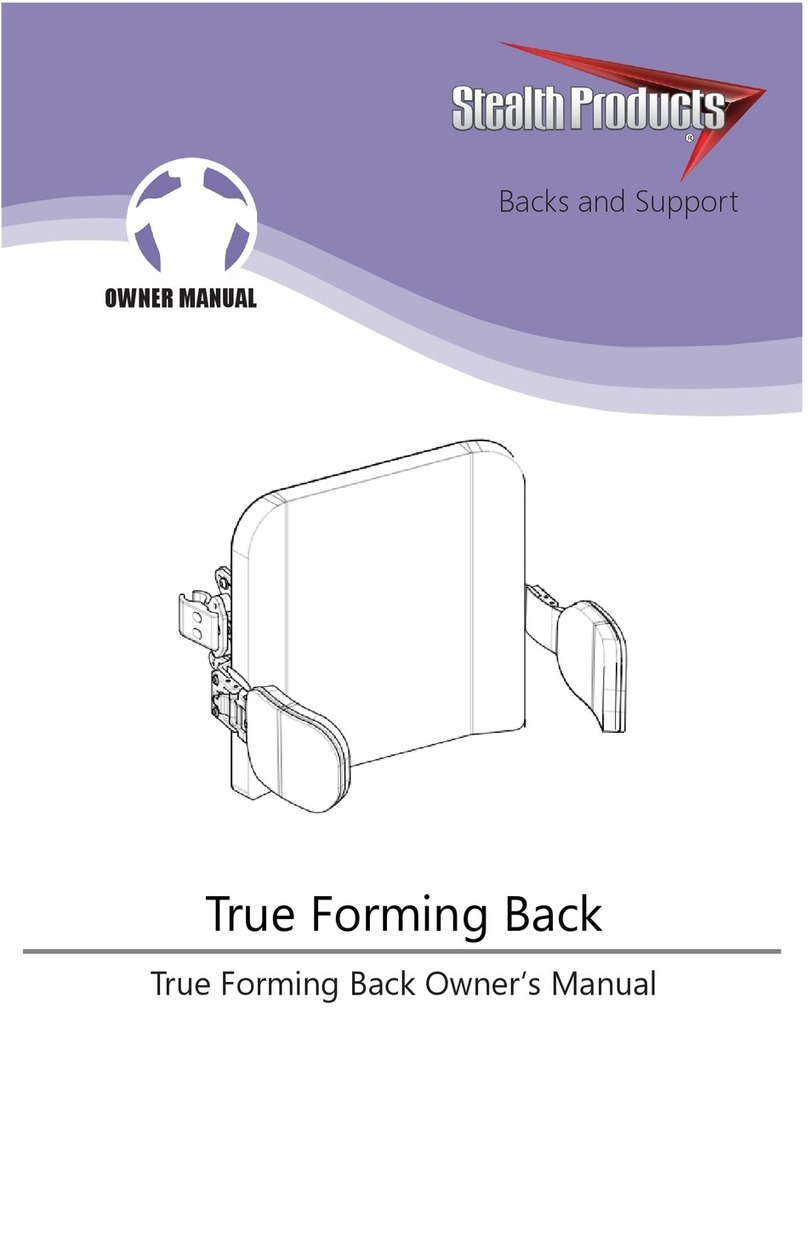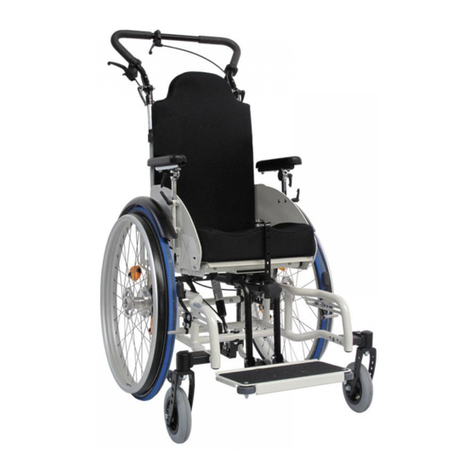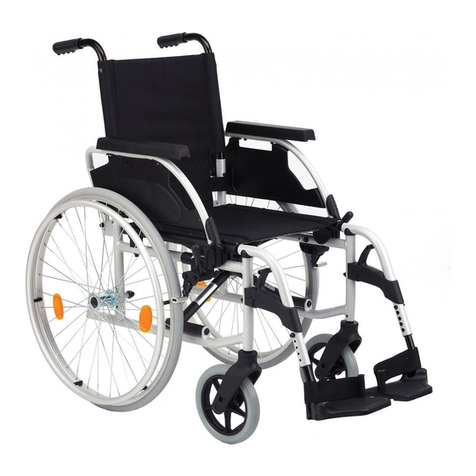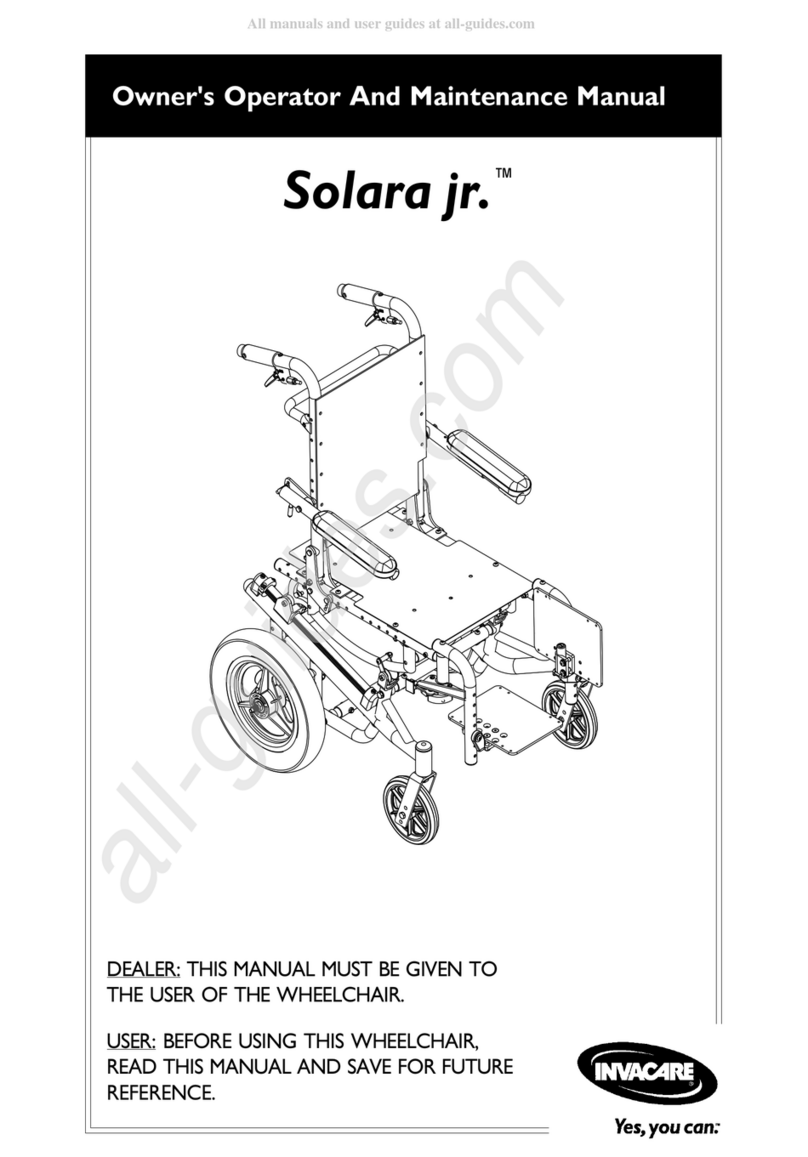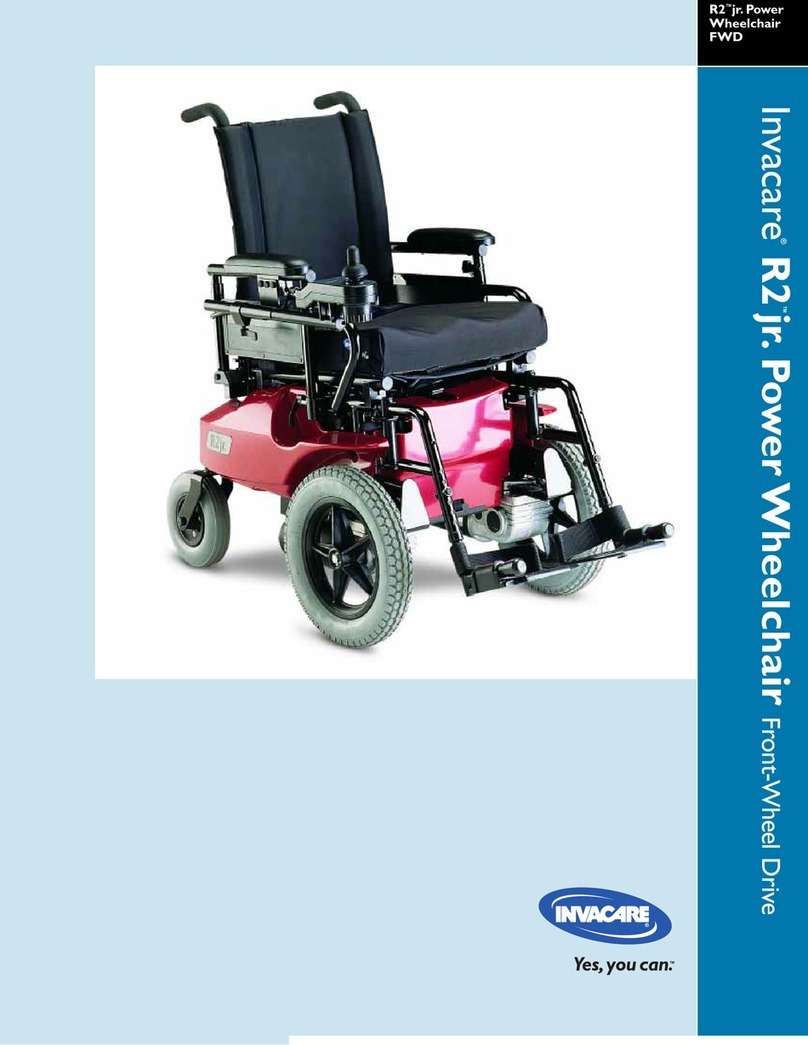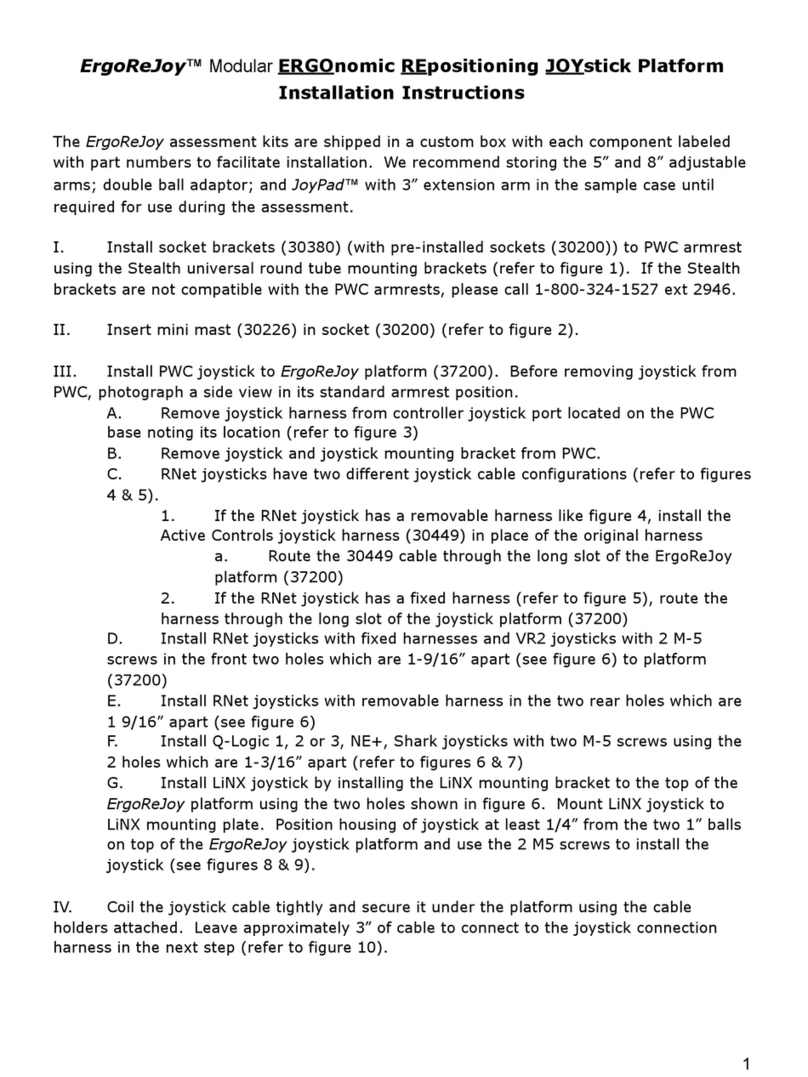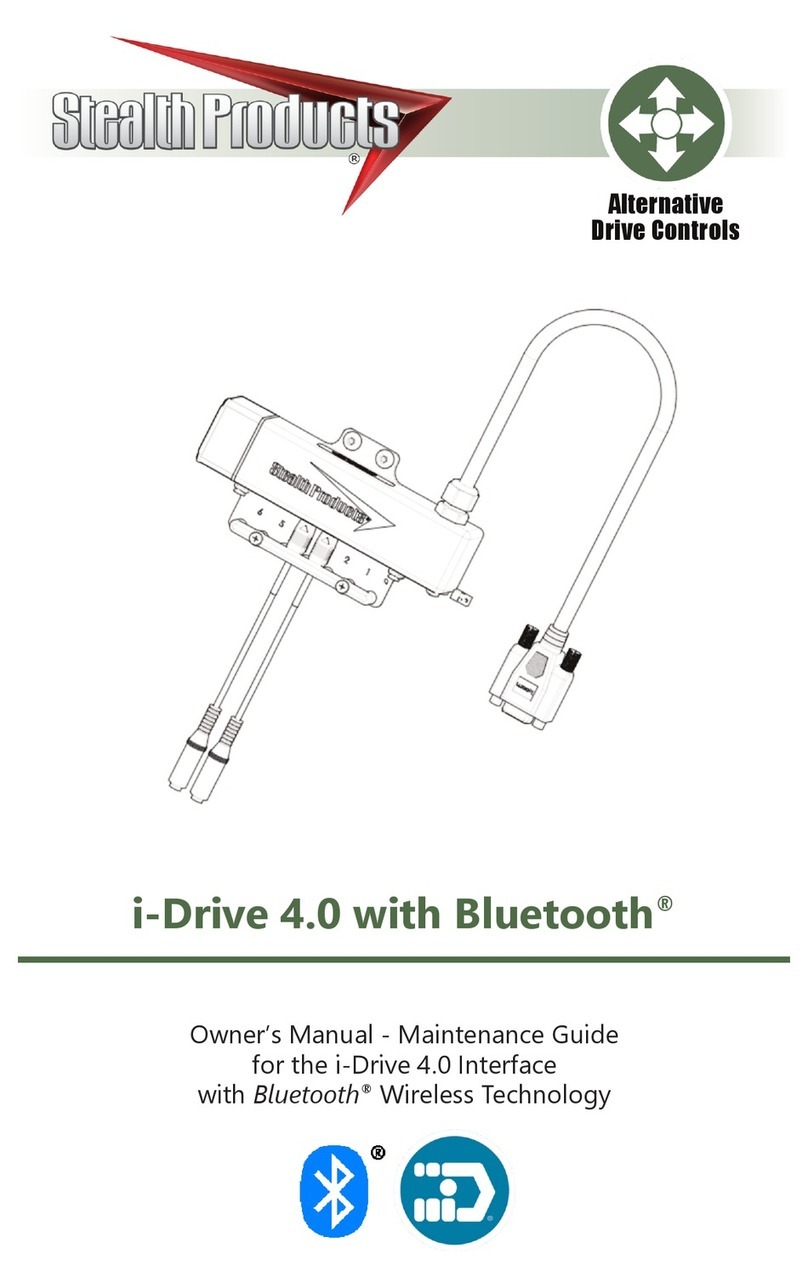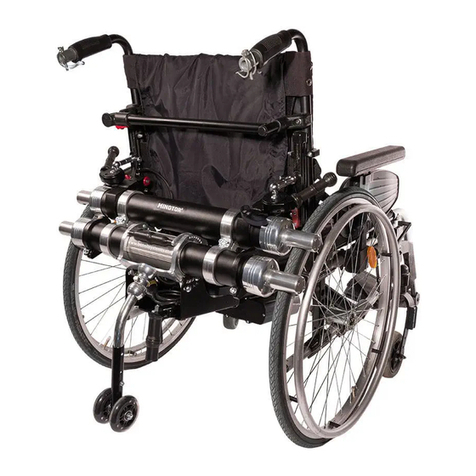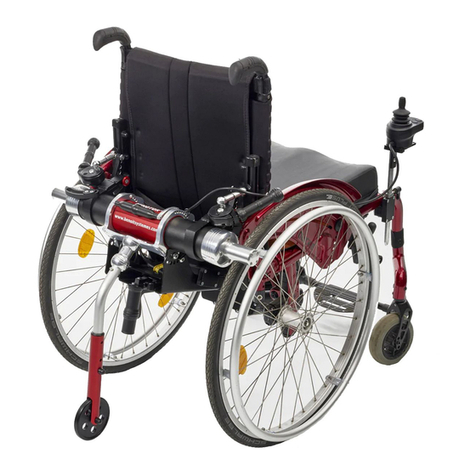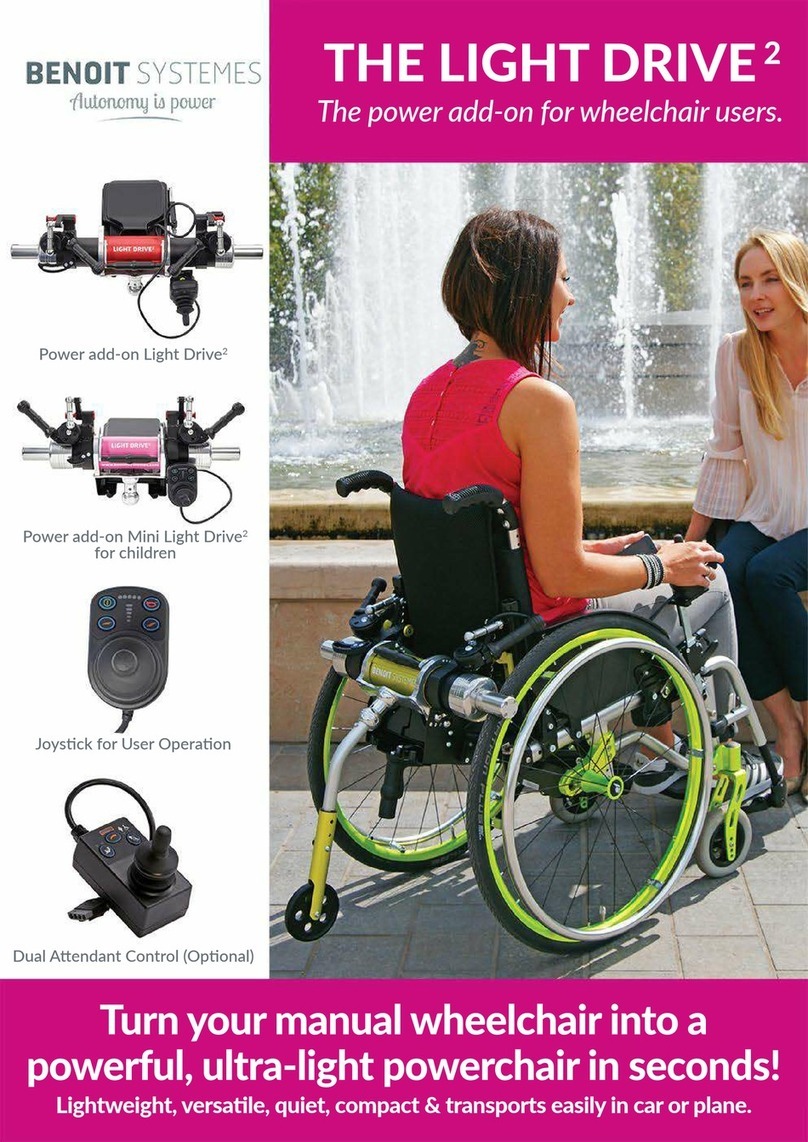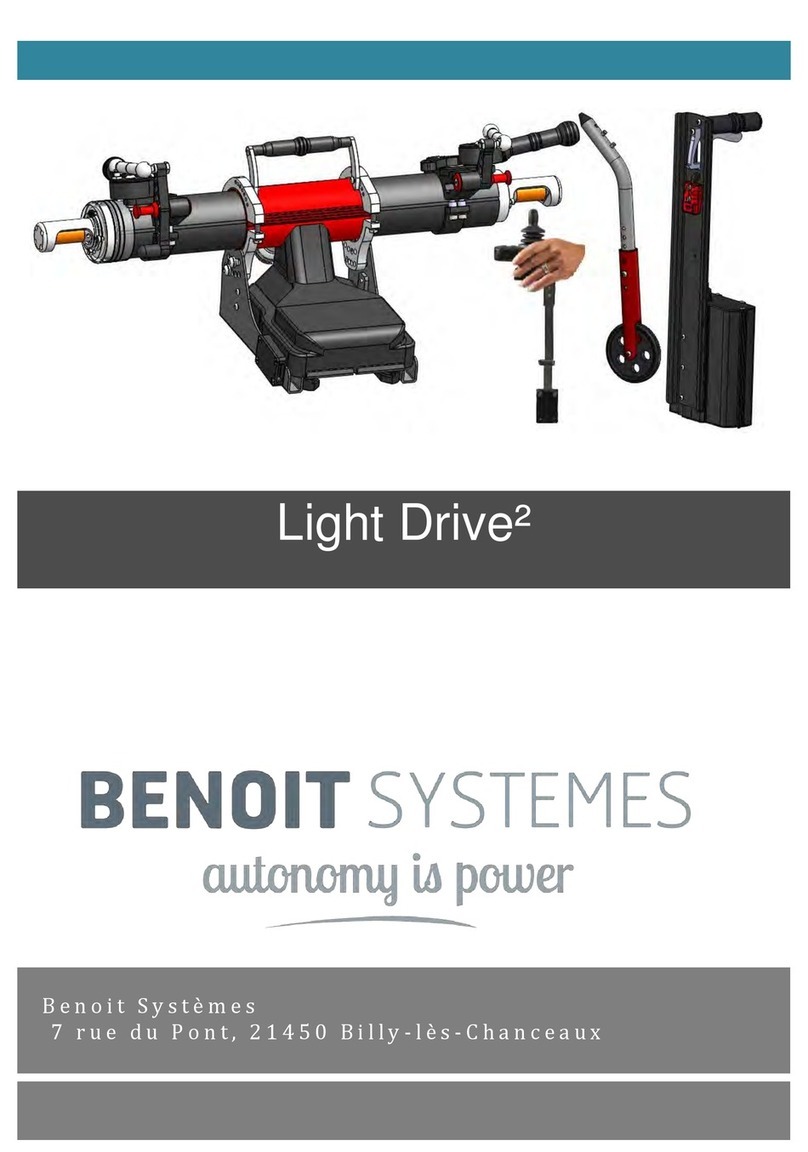
14
humidity.
• Never store your electric vehicle outdoors.
CAUTION
Risk of injury if the maximum permitted load is
exceeded
• Do not exceed the maximum permitted load
(refer to the Technical Specications section).
• The electric vehicle is only designed to
accommodate a single occupant with a
maximum weight not exceeding the maximum
permitted load for this equipment. Never use
the vehicle to transport several people.
CAUTION
Risk of injury in the event of inappropriate
handling or fall of heavy parts
• During servicing and maintenance operations
or when you are lifting certain parts of the
equipment, consider the weight of each
component, particularly the batteries. Ensure
you always adopt the correct posture and
don’t hesitate to ask for help.
CAUTION
Risk of injury caused by moving parts
• Ensure that the moving parts of the motorised
vehicle, such as the wheels or joystick, do not
cause injuries, particularly when children are
present.
CAUTION
Risk of re or fault when connecting electrical
equipment
• Do not connect your motorised vehicle to
any equipment that has not been explicitly
permitted by Benoit Systemes. Rely on your
Benoit Systemes approved dealer for all
electrical installations.
SAFETY INFORMATION ABOUT THE ELECTRICAL
SYSTEM
WARNING
Risk of damage to the equipment or serious, even
fatal, injury.
Inappropriate use of the motorised vehicle can
result in the emission of smoke or sparks, and heat
may be given off.
A re is likely to cause damage to the equipment
or serious, even fatal, injuries.
• The motorised vehicle must NOT be used
for a purpose other than that for which it is
designed.
• If the vehicle begins to emit smoke, sparks
or heat, stop using it and have it checked
IMMEDIATELY.
WARNING
Risk of injury or damage associated with short-
circuits
The pins of the connectors tted to the cables
connected to the power module can remain live
even when the system is stopped.
• Cables tted with active pins must be
connected, retained or covered (using non-
conductive materials) so as not to be exposed
to human contact nor to materials likely to
cause short-circuits.
• When cables tted with active pins have to
be disconnected (e.g. to disconnect the bus
cable from the control unit for safety reasons),
ensure the pins are retained or covered (using
non-conductive materials).
WARNING
Risk of damage to the equipment or serious, even
fatal, injury.
Corrosion of electrical components due to
exposure to water or liquids can result in damage
to the equipment or serious, even fatal, injuries.
• Reduce the exposure of electrical components
to water and/or liquids.
• Electrical components damaged by corrosion
MUST be replaced immediately.
• Motorised vehicles frequently exposed
to water/liquids can require electrical
components to be replaced more frequently
WARNING
Risk of serious, even fatal, injury
Failure to take note of these warnings can cause
an electrical discharge resulting in serious or fatal
injuries, or damage to the electrical system.
• The POSITIVE (+) RED cable from the battery
MUST be connected to the POSITIVE (+)
terminals/poles of the battery.
• The NEGATIVE (–) BLACK cable from the
battery MUST be connected to the NEGATIVE
(–) terminals/poles of the battery.
• Ensure that tools and/or cables are NEVER
in contact with BOTH poles of the battery at
the same time. This could cause an electrical
discharge and damage to the equipment or
serious, even fatal, injuries.
• Immediately replace a cable(s) where the
insulating cover is damaged, the cable(s)
frayed or the lead(s) cut.
• Do NOT remove the fuse nor the fastenings






















